In a small meadow in Burlington, Queen Anne's Lace is in full bloom. The tall, flat cluster of tiny white flowers are attracting a wide variety of different creatures. Here is just a sample of the diverse array of pollinators:
Flower Beetles such as Judolia cordifera are feasting away without much fear of my camera lens. Ironically, the wasps seem to be more skidish around the camera.
This ichneumon wasp (Exetastes suaveolens) was very shy, but persistence paid off with an identifiable picture. This is a very specialized species. As an adult, it feeds at a variety of flowers, but as a larva it must consume the caterpillar of the Goldenrod Hooded Owlet caterpillar (Cucullia asteroides). These wasps are parasites.
Another parasitic wasp feeding a few flowers down is a spider wasp (Anoplius carolinus). When not foraging at flowers, this wasp hunts down spiders, paralyzes them, carries them to an underground chamber, and buries them alive so they can be consumed by the wasp larva.
This wasp won't be visiting any more flowers after being captured and killed by a mating pair of Ambush Bugs. The Ambush Bugs are masters of camouflage and catch prey many times their own size. The wasp is easy to see in this photo, but can you see the Ambush Bugs feeding on it?
These wasps (Ancistrocerus gazella) consider the flowers of "the queen" to be a perfect place to mate. The female will later build a nest out of mud and provision it with caterpillars for its young.
This aerial yellow jacket (Dolichovespula arenaria) also stopped in for a meal at "the queen's" waystation.
Other non-wasps were visiting the flowers, including the Oriental Beetle (Anomala orientalis)
A sawfly (Arge sp.) made an appearance at a flower near the edge of the meadow and the forest. As a larva, this sawfly feeds on plants.
Adding a fly into the mix, Toxomerus geminatus was one of several gorgeous Diptera species seen.
This next visitor to "the queen" spends its larval life under the bark of a tree, feeding on other insects. As an adult, this beetle-that-looks-like-a-moth (Calopteron sp.) can be predatory, or, feed on nectar at flowers.
This is just a small sample of more than 20 species of pollinators that were observed at Queen Anne's Lace in this small meadow in the heart of Burlington. While they act similar as they feed on nectar and pollen, they each have their own unique appearance and life history.
Watch for goldenrod, just starting to bloom across the state. As Queen Anne's Lace fades away, the goldenrod pollinator show is just beginning!
Thanks to the many contributors to bugguide.net for their help with identifications.


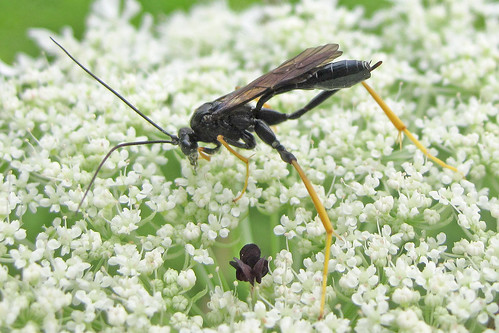
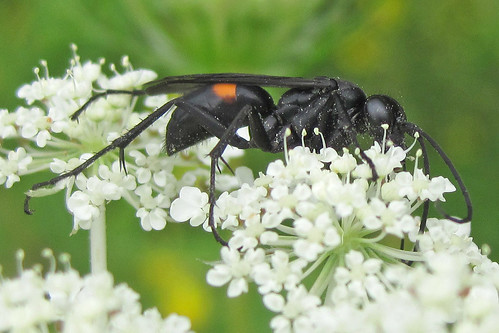
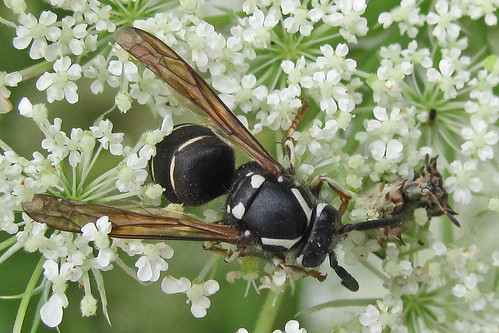


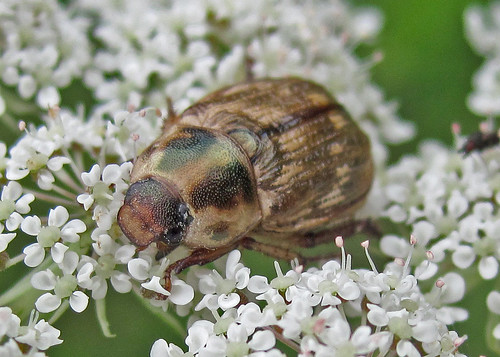
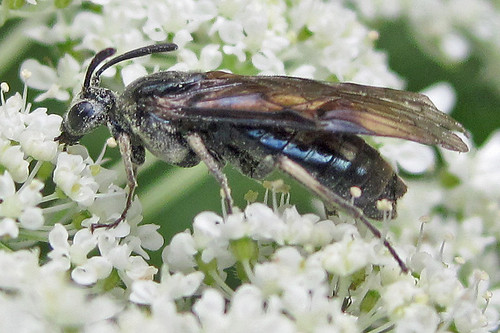


No comments:
Post a Comment